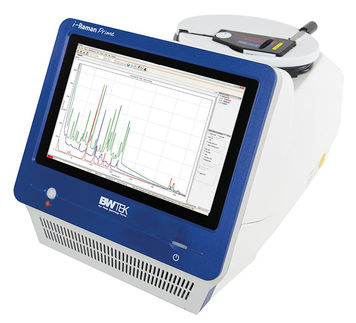This page provides supplementary chemical data on aniline.
Material Safety Data Sheet
The handling of this chemical may incur notable safety precautions. It is highly recommend that you seek the Material Safety Datasheet (MSDS) for this chemical from a reliable source such as SIRI, and follow its directions. MSDS for aniline is available at Mallinckrodt Baker.
Structure and properties
Thermodynamic properties
| Phase behavior
|
| Triple point
| 267.13 K (–6.02 °C), ? Pa
|
| Critical point
| 698.8 K (425.7 °C), 4890 kPa
|
Std enthalpy change
of fusion, ΔfusHo
| 10.54 kJ/mol
|
Std entropy change
of fusion, ΔfusSo
| 39.57 J/(mol·K) at –6.3°C
|
Std enthalpy change
of vaporization, ΔvapHo
| 55.83 kJ/mol at 25°C
42.44 kJ/mol at 184.1°C
|
Std entropy change
of vaporization, ΔvapSo
| ? J/(mol·K)
|
| Solid properties
|
Std enthalpy change
of formation, ΔfHosolid
| ? kJ/mol
|
Standard molar entropy,
Sosolid
| ? J/(mol K)
|
| Heat capacity, cp
| ? J/(mol K)
|
| Liquid properties
|
Std enthalpy change
of formation, ΔfHoliquid
| 31 kJ/mol
|
Standard molar entropy,
Soliquid
| 191. J/(mol K)
|
Enthalpy of combustion, ΔcHoliquid
| –3393 kJ/mol
|
| Heat capacity, cp
| 193.7 J/(mol K) at 25°C
|
| Gas properties
|
Std enthalpy change
of formation, ΔfHogas
| 87 kJ/mol
|
Standard molar entropy,
Sogas
| ? J/(mol K)
|
| Heat capacity,[4] cp
| 148.7 J/(mol K) at 25°C
|
| van der Waals' constants[5]
| a = 2685 L2 kPa/mol2
b = 0.1369 liter per mole
|
Vapor pressure of liquid
| P in mm Hg | 1 | 10 | 40 | 100 | 400 | 760 | 1520 | 3800 | 7600 | 15200 | 30400 | 45600
|
| T in °C | 34.8 | 69.4 | 96.7 | 119.9 | 161.9 | 184.4 | 212.8 | 254.8 | 292.7 | 342.0 | 400.0 | —
|
Table data obtained from CRC Handbook of Chemistry and Physics 44th ed.
Distillation data
See also:
Vapor-liquid Equilibrium
for Aniline/Water[6]
P = 745 mm Hg
|
BP
Temp.
°C
| % by mole water
|
| liquid | vapor
|
| 98.5 | | 96.5
|
| 101 | 24.7 | 94.8
|
| 105 | 20.0 | 94.3
|
| 109.8 | 15.3 | 92.4
|
| 115.8 | 11.7 | 89.3
|
| 121 | 9.3 | 86.2
|
| 126 | 7.6 | 81.6
|
| 131 | 5.9 | 75.9
|
| 140 | 4.25 | 70.8
|
| 152 | 2.50 | 60.5
|
| 160 | 1.70 | 48.7
|
| 168 | 1.05 | 34.1
|
|
|
Vapor-liquid Equilibrium
for Aniline/n-hexane[6]
P = 101.325 kPa
|
BP
Temp.
°C
| % by mole hexane
|
| liquid | vapor
|
| 150.2 | 1.50 | 62.50
|
| 136.4 | 2.50 | 76.00
|
| 116.0 | 5.30 | 88.70
|
| 90.0 | 11.00 | 96.00
|
| 79.5 | 16.85 | 97.66
|
| 75.7 | 20.99 | 98.07
|
| 74.1 | 27.35 | 98.31
|
| 73.25 | 37.90 | 98.42
|
| 73.20 | 52.00 | 98.62
|
| 73.15 | 71.46 | 98.78
|
| 72.15 | 81.26 | 98.93
|
| 71.50 | 86.50 | 99.06
|
| 70.70 | 90.93 | 99.16
|
| 69.80 | 95.32 | 99.36
|
| 69.10 | 97.86 | 99.61
|
|
Spectral data
| UV-Vis
|
| λmax
| ? nm
|
| Extinction coefficient, ε
| ?
|
| IR
|
| Major absorption bands[7]
|
| (liquid film)
|
| Wave number | transmittance
|
| 3663 cm−1 | 77%
|
| 3429 cm−1 | 32%
|
| 3354 cm−1 | 20%
|
| 3214 cm−1 | 44%
|
| 3088 cm−1 | 62%
|
| 3072 cm−1 | 55%
|
| 3037 cm−1 | 38%
|
| 3010 cm−1 | 67%
|
| 2930 cm−1 | 81%
|
| 2904 cm−1 | 79%
|
| 2640 cm−1 | 79%
|
| 2627 cm−1 | 81%
|
| 1929 cm−1 | 77%
|
| 1839 cm−1 | 79%
|
| 1705 cm−1 | 77%
|
| 1621 cm−1 | 7%
|
| 1601 cm−1 | 5%
|
| 1557 cm−1 | 70%
|
| 1525 cm−1 | 66%
|
| 1496 cm−1 | 4%
|
| 1467 cm−1 | 34%
|
| 1332 cm−1 | 74%
|
| 1312 cm−1 | 57%
|
| 1277 cm−1 | 25%
|
| 1176 cm−1 | 32%
|
| 1154 cm−1 | 68%
|
| 1053 cm−1 | 77%
|
| 1028 cm−1 | 64%
|
| 996 cm−1 | 60%
|
| 881 cm−1 | 53%
|
| 754 cm−1 | 8%
|
| 693 cm−1 | 10%
|
| 620 cm−1 | 47%
|
| 529 cm−1 | 50%
|
| 504 cm−1 | 18%
|
|
| NMR
|
| Proton NMR
|
|
| Carbon-13 NMR
|
|
| Other NMR data
|
|
| MS
|
Masses of
main fragments
|
|
UV Absorbance Spectroscopy of Aniline
Aniline is a benzenoid compound. The NH2 group attached to the benzene ring means that there is a lone pair of electrons that can enter into conjugation with the benzene ring resulting in delocalization in the aniline.
Aniline absorbs in the K (220 - 250 nm) and the B (250 - 290 nm) bands exhibited by benzenoid compounds. The K and B bands arise from π to π* transitions as a result of the a group containing multiple bond being attached to the benzene ring. When dissolved in ethanol, λmax for aniline is 230 nm, but in dilute aqueous acid λmax is 203 nm. In the latter case the anilinium cation is formed and the lone pair is no longer available for conjugation with the benzene ring. Consequently, the absorption of the molecule shifts to the lower λmax value and behaves like benzene.
Regulatory data
References
- ^ Lange's Handbook of Chemistry, 10th ed. pp 1234-1237
- ^ Lange's Handbook of Chemistry, 10th ed. pp 1661-1663
- ^ Lange's Handbook of Chemistry, 10th ed. pp 1669-1674
- ^ a b Pure Component Properties (Queriable database). Chemical Engineering Research Information Center. Retrieved on 28 May 2007.
- ^ Lange's Handbook of Chemistry, 10th ed, pp 1522-1524
- ^ a b Binary Vapor-Liquid Equilibrium Data (Queriable database). Chemical Engineering Research Information Center. Retrieved on 6 June 2007.
- ^ [http://www.aist.go.jp/RIODB/SDBS/cgi-bin/cre_index.cgi Spectral Database for
Organic Compounds] (Queriable database). Advanced Industrial Science and Technology. Retrieved on 9 June 2007.
- NIST Standard Reference Database.
- Finar, I.L. (1974); Organic Chemistry Vol.2 - Stereochemistry and the chemistry of natural products 5th. Ed. Longman
Except where noted otherwise, data relate to standard ambient temperature and pressure.
Disclaimer applies.
|







